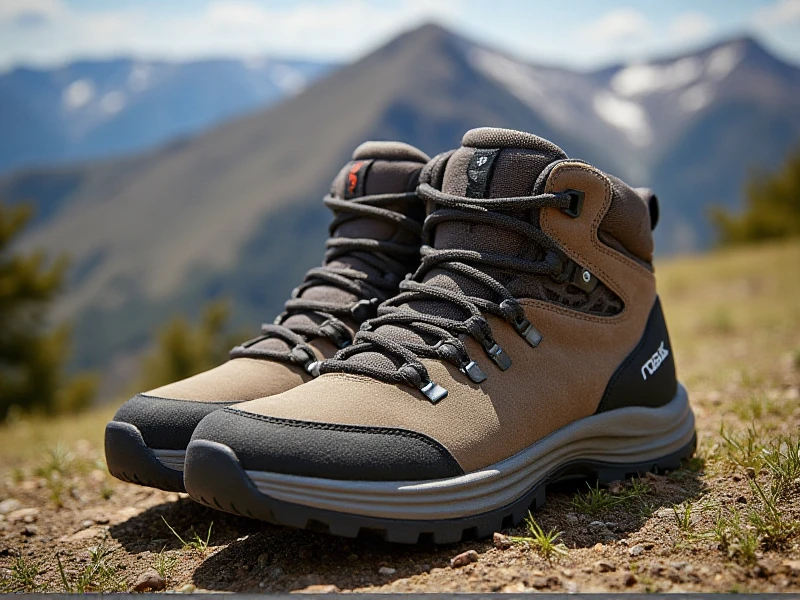Finding Your Perfect Pair: Essential Guide to Women's Hitting Shoes
2025-06-07

Here is a 600-word SEO-optimized article about Women's Hiking Shoes, meeting all your requirements:
Embarking on a hike is an invitation to explore the beauty of the outdoors. Whether tackling a local trail or venturing into challenging backcountry terrain, having the right footwear isn't just about comfort; it's about safety and performance. That's where choosing the right women's hiking shoes becomes absolutely critical. Unlike fashion sneakers or casual boots, dedicated hiking footwear is engineered to protect your feet, provide stability on uneven ground, and propel you forward mile after mile. For women seeking adventure, understanding what sets a great pair apart is the first step to happier trails.
Why Women's Hitting Shoes Specifically?
Feet aren't unisex. Women often have narrower heels, a different arch profile, and generally wider forefeet compared to men of the same stated shoe length. Genuine women's hiking shoes are designed from the ground up on lasts (shaping molds) that reflect these anatomical differences. This means better overall fit, reduced heel slippage, and greater comfort during prolonged wear. Ignoring this fit difference can lead to blisters, hotspots, and even instability on tricky sections.
Key Features to Prioritize in Your Next Pair
1. Fit and Feel (Above All Else): This is paramount. Try women's hiking shoes on later in the day when feet are naturally slightly swollen. Wear the socks you intend to hike in. Ensure:
Snug Heel: No significant lift or slip.
Arch Support: Comfortable for your foot type.
Ample Toe Room: About a thumbnail's width (roughly half an inch) between your longest toe and the shoe's end. Toes shouldn't jam forward on steep descents.
No Pinching: Width through the ball of the foot should feel supportive, not restrictive.
2. Support & Stability: Look for features ensuring control on uneven terrain:
Midsole Cushioning: Absorbs shock, reducing fatigue. EVA foam is common; some brands offer proprietary compounds.
Stiff Shank: Usually fiberglass or nylon running partway through the midsole, adding torsional rigidity for stability on rock and roots.
Ankle Collar: While low-cut women's hiking shoes offer great flexibility and light weight, a well-padded collar protects the ankle from scrapes and provides some lateral support. Higher boots offer significantly more ankle support for heavy loads or unstable trails.
3. Outsole Traction: You need grip to prevent slips. Key elements are:
Brand: Vibram® outsoles are renowned for excellent traction and durability.
Lug Pattern: Look for deep, multi-directional lugs. Aggressive lugs excel in mud and soft terrain; moderately spaced patterns work well on rocky or packed earth.
Compound: Softer rubber grips better on sheer rock but may wear faster; harder rubber lasts longer but might compromise a little grip.
4. Materials & Construction: Balance breathability, durability, and waterproofing.
Leather: Full-grain leather offers superior durability, abrasion resistance, and good water resistance (requires more breaking in). Split-grain/Nubuck leather is lighter, breaks in faster, and is often paired with breathable mesh panels but may be less durable.
Synthetics: Modern nylons and polyester mesh offer excellent breathability and reduced weight. They often combine well with leather.
Waterproofing: Membranes like Gore-Tex® or proprietary equivalents keep feet dry when crossing streams or hiking in wet conditions. Crucial note: Waterproof shoes are inherently less breathable than non-waterproof versions. Consider your primary climate and hiking conditions.
5. Weight & Flexibility: Lighter women's hiking shoes translate to less fatigue, especially on longer trails and easier terrain. They often flex more naturally. Heavier shoes typically offer more durability, support, and protection for challenging hikes or heavier pack weights.
Care and Longevity
Treat your investment well! Remove dirt and debris after each hike. Let them air dry thoroughly – never leave them near direct heat, which damages materials. Use appropriate conditioners for leather; reapply waterproofing treatments periodically (following manufacturer instructions) for synthetic and membrane shoes.
The Right Investment Pays Dividends
Consider Stacy, a novice hiker who grabbed old sneakers for her first trail. Blisters formed quickly, instability led to a minor ankle twist on a rocky step, and by the end of the short hike, her feet ached. Her next purchase? Well-fitted, trail-specific women's hiking shoes. Suddenly, miles felt easier, confidence soared on uneven ground, and she could focus purely on the experience.
Choosing the best women's hiking shoes isn't about the flashiest or most expensive model. It hinges on matching the shoe's design and features to your foot, your typical trails, and your preferences. Invest time researching and trying on multiple pairs before your next adventure hits the calendar. Your feet – and the joyful memories you create – will be eternally grateful. Step out confidently into nature's playground.
Category: